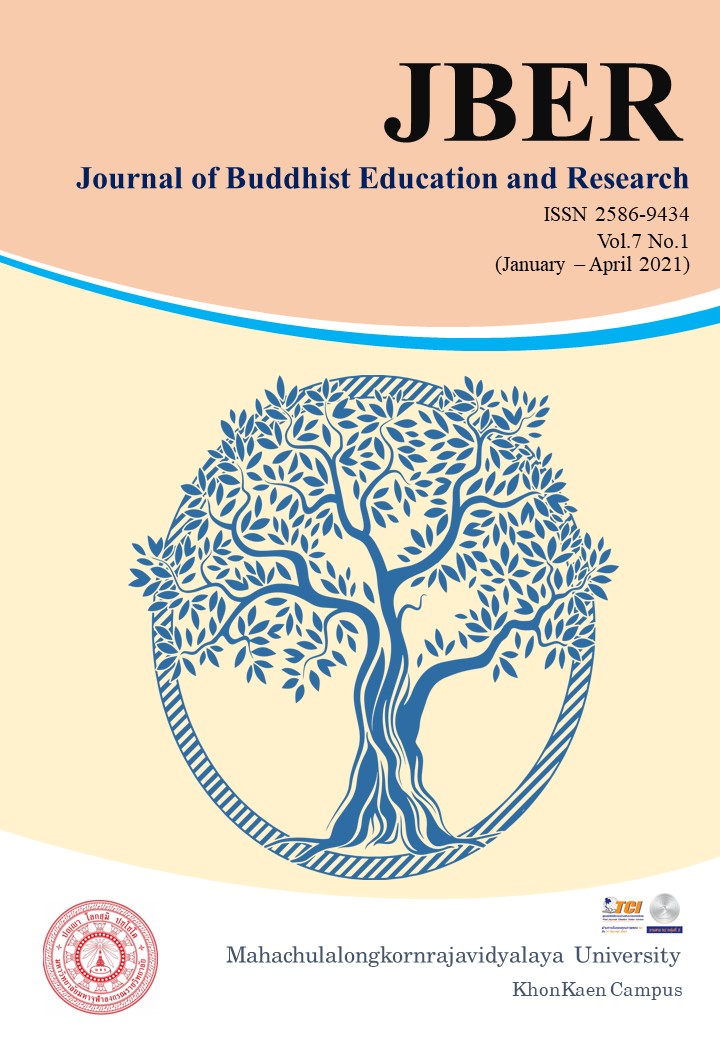NARROW READING AND EFL LEARNERS’ VOCABULARY LEARNING IN A THAI BUDDHIST UNIVERSITY
Keywords:
narrow reading, vocabulary learning, vocabulary knowledge, attitudeAbstract
This study aimed to investigate the effect of narrow reading on vocabulary learning in a Thai university learning context. It also sought to explore the students’ overall attitudes toward the narrow reading approach. This study’s participants were 41 first-year undergraduate students of two intact classes, enrolled in a Thai Buddhist university. The participants were divided into the experimental group and the control group. The vocabulary knowledge scale test was given to all participants to measure their vocabulary improvement. A five-point Likert questionnaire was also used to explore participants’ overall attitude toward the narrow reading approach. The data were analyzed using the vocabulary knowledge scale and questionnaire. The results indicated the benefits of narrow reading in enhancing Thai learners’ vocabulary growth. Specifically, narrow reading enhanced learners’ ability to recognize and recall the meaning of a word from multiple encounters and their ability to appropriately use it in context. The questionnaire results also showed Thai university learners’ high positive attitude toward narrow reading with an average of 4.59 (91.8%). Specifically, learners’ interest, confidence and attitude toward narrow reading were remarkably increased after reading. Other implications of these findings are also discussed regarding current pedagogical practice and theory.
References
Chang C-S & Renandya W (2019) Current practice of extensive reading in Asia: teachers’ perceptions. The reading Matrix. 17(1), 40–59.
Cho, K. S. (1994). Acquisition of vocabulary from the Sweet Valley Kids series: Adult ESL acquisition. Journal of Adolescent & Adult Literacy. 37(8), 662-667.
Cho, K., Ahn, K. & Krashen, S. (2005). The Effects of Narrow Reading of Authentic Texts on Interest and Reading Ability in English as a Foreign Language, Reading Improvement Journal. 42(1), 58-64.
Goldenberg, C. (2004). Literacy for all children in the increasingly diverse schools of the United States. In R. B. Ruddell and N. J. Unrau. (eds.). Theoretical Models and Processes of Reading. 5th ed. Delaware: International Reading Association, 1636-1666.
Hwang, K., & Nation, I. S. P. (1989). Reducing the vocabulary load and encouraging vocabulary learning through reading newspapers. Reading in a Foreign Language, 6, 323–335.
Kang E. (2015). Promoting L2 vocabulary learning through narrow reading. RELC Journal, 46(2), 165–179.
Krashen, S. (1996). The Case for Narrow Listening. System. 24(1), 97–100.
Laufer, B. & Sim, D. (1985). Measuring and explaining the reading threshold needed for English for academic purposes texts. 18(5). 405–411.
Nation, I.S.P. (2013). Vocabulary acquisition in second language acquisition. In The Encyclopedia of Applied Linguistics, ed. Chapelle, C.A. Oxford, UK: Wiley-Blackwell.
Paribakht, T. S., & Wesche, M. (1997). Vocabulary enhancement activities and reading for meaning in second language vocabulary development. In J. Coady & T. Huckin (Eds.), Second language vocabulary acquisition: A rationale for pedagogy. New York, NY: Cambridge University Press.
Rai sa-nguan, S. (2019). EFL Students’ Reading Ability through Narrow Reading: Matters of Vocabulary Acquisition and Reading Comprehension. Master’s thesis. Mahasarakham University.
Rai sa-nguan, S, & Sukying, A. (2019). The effect of narrow reading on vocabulary learning and reading comprehension in EFL learners. The proceedings of the International Conference on English Language Studies (ICELS 2019), 203-217.
Richards, J. C. & W. A. Renandya. (Eds.). (2002). Methodology in language teaching: an anthology of current practice. Cambridge: Cambridge University Press.
Schmitt, N., & Carter, P. (2000). The lexical advantages of narrow reading for second language learners. TESOL Journal, 9(1), 4–9.
Wesche, M., & Paribakht, T. S. (1994). Enhancing Vocabulary Acquisition through Reading: A Hierarchy of Text-Related Exercise Types. Paper presented at the AAAL'94 Conference Baltimore, March 5-8.
Yang, A. (2001). Reading and the non-academic learner: a mystery solved. System. 29, 451-466.





